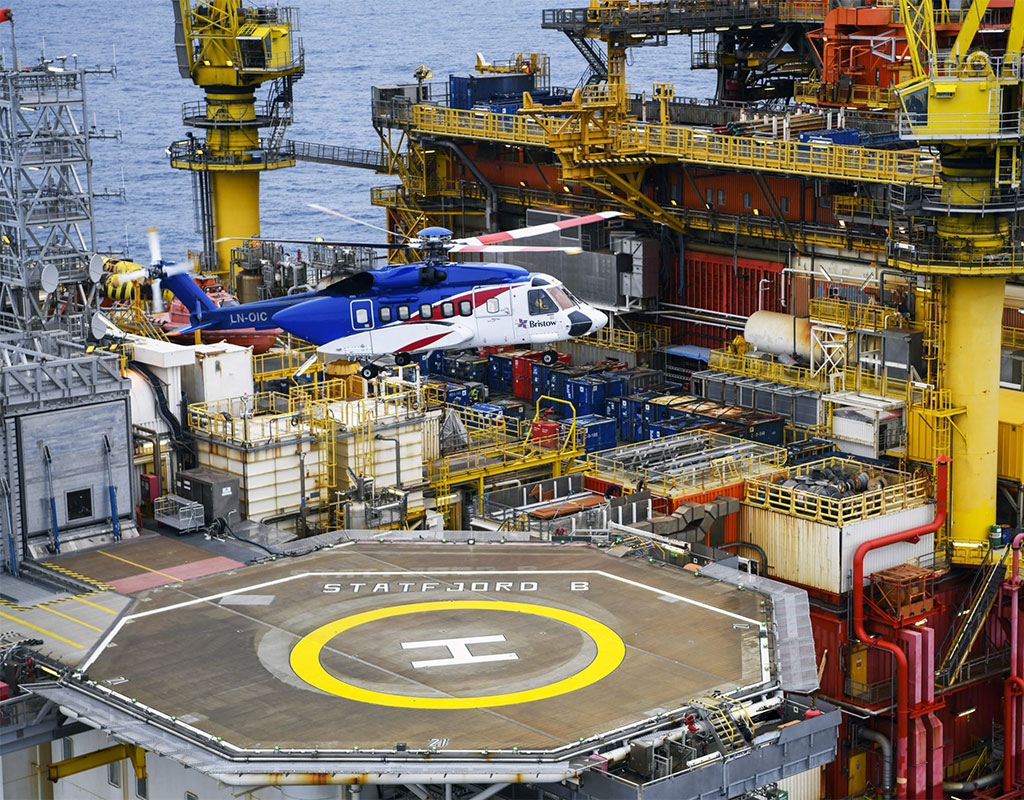
The offshore energy services market is “in the early innings of a multi-year growth cycle,” according to Bristow president and CEO Chris Bradshaw — but he cautioned that this won’t be reflected in a glut of new aircraft orders in the short term.
Speaking to investors as Bristow reported a net loss of $1.5 million over the first quarter, Bradshaw said the fundamentals for the helicopter operator’s business “are improving significantly,” setting it up for stronger financial results in the future.
He said the first three months are traditionally Bristow’s “softest” quarter, with lower activity due to fewer daylight hours and more adverse weather conditions. Bristow’s activity in the first quarter of 2023 was also impacted by the transition of aircraft between contracts, with several agreements reaching the end of their term in the quarter.
However, the results were actually better the first quarter of 2022 — where Bristow recorded a net loss of $7 million — and were better than the company’s management had estimated.
“We believe the offshore energy services market is in the early innings of a multi-year growth cycle,” he told investors. “Expectations for increased offshore energy spending in 2024 and 2025 point to continued improvement in this part of our business.”
In a press release announcing the quarterly results, Bristow noted that a tighter equipment market, constrained global labor force, and inflationary cost pressures “should drive meaningful rate increases” in the offshore sector.
However, when he was asked whether the offshore market is ready for new aircraft orders, Bradshaw said there was “a very thin order book” for offshore aircraft, with new orders largely driven by specific customer requests.
“I don’t think we’re in a position today where you’re going to see any kind of broad fleet-wide order book develop in the near term for offshore-configured helicopters,” he said. “The recent helicopter orders that we have placed have been for the government services contracts that we’ve won, and we’re excited about the opportunity to deploy capital into those high margin, high returning, long-term contracts.”
The diversification of Bristow’s business, with an increased focus on government services contracts — such as the landmark UKSAR and the follow-up £1.6 billion 10-year UKSAR2G contracts — have helped provide greater stability for the company against the fluctuations of the energy market.
This year will represent the first full year of search-and-rescue (SAR) services for Bristow in the Falkland Islands, the Netherlands and the Dutch Caribbean. Bradshaw said the operator is involved in other active tenders for further government services contracts.
“We believe Bristow is well positioned to continue the recent growth of our government services business,” he said. “While there are some headwinds to note, including supply chain challenges, a constrained global labor force, and a strong US dollar relative to the British pound, we remain highly encouraged by the improved fundamentals and outlook for Bristow’s business.”
Bristow has a global fleet of 226 aircraft — 181 of which it owns. The most common types in its fleet are the Sikorsky S-92 (68 aircraft), the Leonardo AW139 (53), the AW189 (21), and the Sikorsky S-76 (20).
Bradshaw said the operator has sold about 80 helicopters since its merger with Era in June 2020, but these were largely “underutilized” light and legacy medium helicopters. “I don’t think we’ll be as active [selling aircraft] going forward,” he said.

